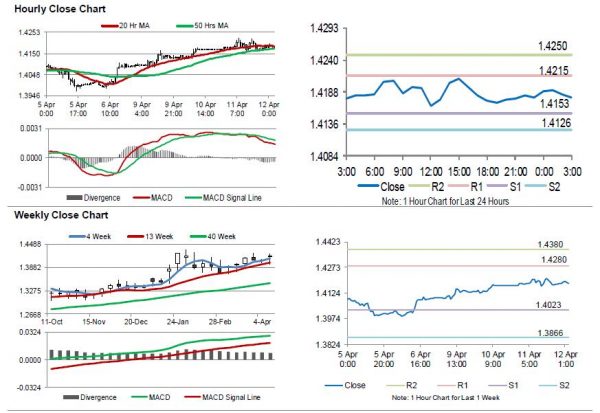For the 24 hours to 23:00 GMT, the GBP rose 0.08% against the USD and closed at 1.4180.
On the economic front, data showed that manufacturing production in the UK registered an unexpected drop of 0.2% MoM in February, marking the first drop since March 2017. In the preceding month, manufacturing production had registered a revised flat reading, whereas investors had envisaged for a gain of 0.2%. Moreover, the nation’s construction output surprisingly slid 1.6% on a monthly basis in February, confounding market expectations for an increase of 0.9%. Construction output had registered a revised drop of 3.1% in the previous month.
On the contrary, the nation’s industrial production advanced 0.1% on a monthly basis in February, undershooting market consensus for a rise of 0.4%. In the previous month, industrial production had climbed 1.3%. Also, the nation’s total trade deficit narrowed to £0.97 billion in February, following a revised deficit of £2.95 billion in the previous month, while markets were anticipating the nation to register a deficit of £2.60 billion.
In other economic news, the NIESR estimated that Britain’s gross domestic product (GDP) rose 0.2% in the January-March 2018 period, compared to a revised advance of 0.1% in the December-February 2018 period. Market expectation was for NIESR estimated GDP to advance 0.3%.
In the Asian session, at GMT0300, the pair is trading at 1.4180, with the GBP trading flat against the USD from yesterday’s close.
The pair is expected to find support at 1.4153, and a fall through could take it to the next support level of 1.4126. The pair is expected to find its first resistance at 1.4215, and a rise through could take it to the next resistance level of 1.4250.
Going ahead, investors would closely monitor the Bank of England’s (BoE) credit conditions survey report, due to release in a few hours.
The currency pair is showing convergence with its 20 Hr moving average and trading above its 50 Hr moving average.














